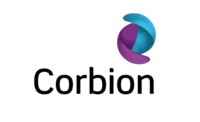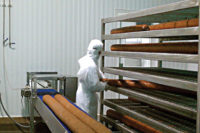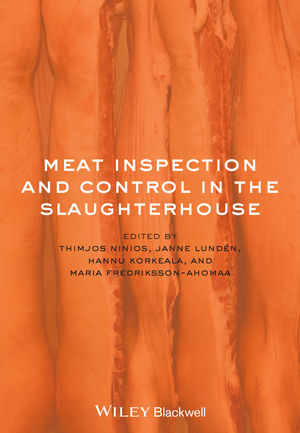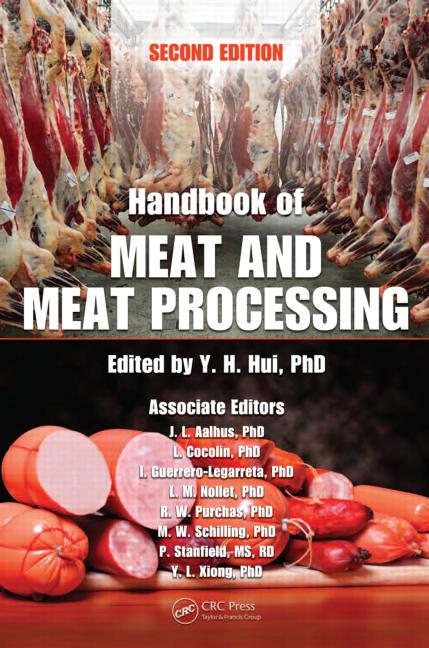From farm to table, preparing meat products for consumers is a highly sensitive procedure that requires immense consideration at every step along the line. To keep products safe and consistent, meat, poultry and seafood processors must implement measures that can control variables, prevent outside interference and keep parameters the same for every product batch.
Avoiding contamination risks and preventing inconsistencies in product quality is challenging for any food manufacturer. Adopting the right process control strategy is made easier by knowing which factors to watch out for and by utilizing the right technologies, including automated equipment.
The 2017 Trends Shaping Meat, Poultry, and Seafood report from PMMI, The Association for Packaging and Processing Technologies, reveals 96 percent of interviewed companies plan to increase their use of automated machinery within the next three to five years. As this type of equipment continues to emerge in the industry and become more affordable, meat and poultry manufacturers will be able to reach new levels of process control standards.
Keep it clean
When food products land in the hands of consumers, it’s imperative those products have been carefully prepared and kept safe, fresh and clean up to the point of consumption. The processor’s responsibility lies with the cooking and prepping stages of meat production. To create a safe product, processors must maintain high standards of cleanliness on the plant floor. Government regulations and Hazard Analysis and Critical Control Point (HACCP) standards help to provide benchmarks for manufacturers to pass quality control and food safety inspections.
To meet these requirements, food processors must install equipment that is easy to clean and wash down. It’s also important that equipment is designed to prevent food from becoming stuck in hard-to-reach places. Corners and joints can catch food create dangerous harborage points for bacteria and contamination.
Beyond the design of the processing work surfaces, automation can ensure that equipment is being cleaned to the highest degree and with the same standards throughout. Automated clean-in-place (CIP) software can standardize the sanitization process and sterilize with a measured amount of cleaning agents, set temperatures and durations. This type of technology minimizes potential bacterial growth and keeps contaminants at bay.
Consistency is key
Consumers count on food brands to provide the same quality and uniformity each time they purchase a product. To meet these expectations, processors must take the necessary steps to keep cuts and shapes of meat as consistent as possible. The degree to which customers judge inconsistencies can, of course, vary between types of products, with most consumers accustomed to purchasing raw chicken breasts and packages of ground beef that range in weight and volume and understanding prices will fluctuate accordingly. Still, consumers generally expect raw products from the same producer to offer some consistency. Uniformity is even more important with (ready-to-eat) RTE products such as deli meat or (ready-to-cook) RTC products such as frozen chicken tenders, for which the product is always at the same price point. Customers expect to buy two of the same bagged or boxed item and see few to no discrepancies in size, shape, color and count.
How does a processor achieve such consistency? Automation again comes into play through sophisticated equipment that can sort items carefully based on characteristics such as weight and shape and toss out food pieces or cuts that are subpar or too irregular. New robotic cutting equipment ensures more even cuts and portions of meat, even when slicing through different textures, densities and shapes. Automated slicers and shredders are also becoming popular among meat, poultry and seafood companies. In fact, according to PMMI’s report, 28 percent of interviewed companies are automating the slaughter and process areas of production. Manufacturers are also using robotics and automated equipment at the stage of inspection, where advanced vision equipment can detect shards of metal, foreign objects or other harmful particles that could go unseen by a worker’s naked eye.
Watch and learn
As process control is about maintaining appropriate standards throughout production, it’s impossible to ignore the role that data — capturing it, recording it and interpreting it — plays in producing a quality product.
When cooking meat products, data can be useful in keeping cooking environments, temperatures and times steady. Data loggers that feature built-in sensors can automatically measure and detect changes in temperature and can help to alert workers when equipment requires adjustments. Some loggers can also be more robust, with probes that can check on product environment even in extreme temperatures or conditions. This intense monitoring of the cooking process ensures items are heated and chilled at the right levels and for the ideal times. Along the same lines of consistent cooking, new ovens are emerging that are designed to hold temperatures more steadily and to provide reproducible cooking environments for each new batch.
Data is also critical for monitoring cleaning processes, digitally recording each necessary step of proper equipment sanitization. Not only can data help to replicate standardized processes, but storing this information also allows for traceability and accountability. As processors continue to move toward automation and artificial intelligence, human machine interface (HMI) software is becoming increasingly popular to record plant processes and capture data for quality inspection testing. This type of software will likely see more widespread use as federal regulations for food safety become more and more stringent and processors work to avoid any liabilities.
Aim for high standards
When food reaches its final retail-ready format, the responsibility for quality control has been passed over to the packagers and the distributors, which must take the appropriate steps to ensure proper maintenance of seals and temperatures throughout the shipping process. Before this handover takes place, however, it’s critical for food processors to provide meat products that have been prepared under careful conditions and make it into the package in the ideal state. Using smart technology where possible and practicing diligent observation will make areas of improvement easier to spot and help processors maintain brand reputation.
Meat, poultry and seafood professionals looking for additional process control strategies can find the latest solutions at ProFood Tech 2019 (March 26-28, 2019; McCormick Place, in Chicago), the only event in North America focused exclusively on all food and beverage sectors, featuring 7,000 processing professionals and 450 of the world’s top suppliers over 150,000 net square feet of exhibit floor. Registration for ProFood Tech is $30 until March 1, after which the price increases to $100. To learn more about ProFood Tech or to register online, visit www.profoodtech.com. NP







Report Abusive Comment